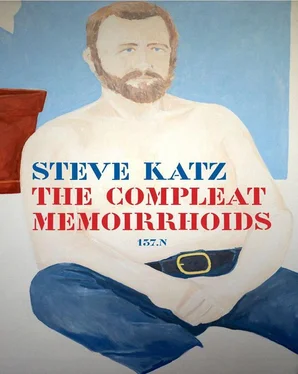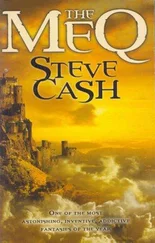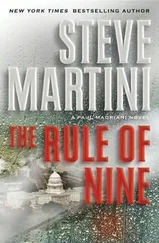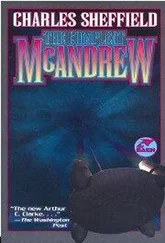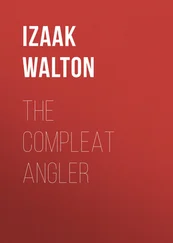We had stopped at the house in Massachusetts of the couple who sewed up the canvas for our tipi. Their names, I think, were Reginald and Gladys Laubin. I don’t remember the little girl’s name. I’ll call her Claire. The Laubins wrote and published The Indian Tipi . They were scholars of Sioux and Cheyenne customs and modes of survival. They did a small business sewing tipis to order, which they did with total authenticity and care. We had ordered their largest Cheyenne style tipi, and were picking it up on our way to Cape Breton.
“I hope you have some long poles,” Reginald said, as they unrolled our twenty-eight foot lodge to show us, and then rolled it up again. I knew little about it, hadn’t even thought out the length of the poles. For a twenty-eight foot lodge you should ideally have fourteen poles, forty feet long. We had cut and peeled fourteen poles out of our woods, but I knew they weren’t more than thirty-two feet long. I began to feel a little nervous and incompetent. The poles should also be slender, with as few knots as possible, they told us. That’s why lodgepole pine is superior. It grows tall and slender, with most of the branches at the top. We had only spruce to cut in our woods, with branches jutting all the way up. We’d removed all the branches and smoothed all the knots, but any nick or splinter encourages the rain, usually channeled down the pole to flow off harmlessly behind the dewcloth, to drip from the point of irregularity into the living space. Nonetheless we were happy with our Cheyenne style tipi, which has longer smoke flaps than the Sioux style, and looks elegant and livable.
As the kids piled into the car, Claire said, “I see a flat tire.” I looked into her face at that moment. She looked much older than her eight or nine years. A smile, just a slight, noncommittal rictus drew across her lips like a line through a cloud.
“Which tire,” I asked. She took my hand, led me around the car, and pointed at the passenger side front tire. It was inflated. I kicked it. It looked as good to me as when we left New York. “It’s not flat,” I said.
“I see a flat tire,” she said again.
“Thank you,” I said, registering in my own mind some confusion and doubt.
As we drove away Jingle remarked that the girl was strange, sweet but strange.
A commendation of swans, black as night, vees away behind the clouds. All the turtles liberated in their bogs and fens and flats, in their swamps and ponds and brooks, rise up in turtle chorus to sing, “Weep, weep.” A rumble of mighty earthworms heft the earth beneath the road. Somewhere the rabbit asks a question. Somewhere else the red fox answers.
Twenty minutes after we left Claire, and were about to turn north off the Mass. Pike, the passenger tire went flat. We pulled onto the shoulder of a side road. We unloaded the Plymouth, jacked it up, put on the spare. For many years Claire has been in my thoughts. Any time I find myself skeptical about clairvoyance, I remember her. How did she know? Was it a coincidence? I don’t think so. Did she sabotage the tire? Unlikely. This was such a minor, random, clairvoyant instance. What is Claire doing now? Does she live in a tipi? Does she conduct séances in a double-wide outside of Portsmouth? I’ll bet she knows I am writing this. This was surely something different, but not the only magic to well up around our tipi.
I thought of this as a pilgrimage, in the late Sixties, early Seventies, to visit Clarence Schmidt and the tumult of his demesne in Woodstock, New York. He was the chief “outsider” artist, famous all over the country, his life and work a living spectacle of barely organized debris. The house and his assemblages festooned four acres on a hill outside of the town. Going there was to visit a chaos that was bearable in contrast with the unbearable chaos, violence, and deceit perpetrated by our government throughout the Vietnam war.
Clarence’s welcome was always huge and physical. The great Kodiak guy of Woodstock engulfed you in big arms, pulled you into his heat and smell. Anything that moved, he hugged. He pulled your face into the thickness of his yellowing beard. You carried the reek home, pleasant as Liederkranz. His story, as I knew it, was that he was a stonemason in Queens, though some say he was also an architect. In his early thirties he inherited four acres of land on Ohayo mountain outside of Woodstock, and soon moved there with his wife. After he worked on several houses around Woodstock as a stonemason, his brain shifted into a different modality. He started laying stone walls in abstract patterns against the hillside on his acreage, and he started to build a house. Soon his wife left him and moved into a trailer on a lot above his place and rained down her garbage off the cliff onto him. I don’t know what his emotional response was, but physically he received the stuff with grace and enthusiasm, and began to incorporate it into his project. That was how the place he called Journey’s End began.
He started building his first “House of Glass,” seven stories of stone and tar and old windows and doors, around a large beech tree, against the side of Ohayo mountain. Spreading out from the “mansion” he developed shrines and totems out of tin plates, empty jugs, plastic flowers, product wrappers, broken dolls, discarded prostheses (a nearby prosthetic factory delivered their discards to him). The dolls limbs and heads made certain nooks in the scrapscape downright spooky. Ranks of broken dolls, some of them dressed, some cracked, burned, pierced, distorted, some with hair of straw attached with tar, looked like a three dimensional, even wackier version of a drawing by that other outsider, Henry Darger, though Clarence’s inventions seemed more sinister than Darger’s playful, erotic fantasy wars. One time when I was there someone delivered two large broken demijohns, useless to everyone but Clarence. Clarence was amazing with his pleasure at the gift of these waste objects. The next time I came the cracks were healed with tar, embellished with limbs of dolls and plastic flowers, placed as if at the entrance to a cave.
“What Egypt took centuries to build,” he spread his arms from his tar stained blue coveralls, his eyes spiraling with apotheosis. “I have made this in less than a lifetime.” He swung his arm as if he were perched on a camel swaying across the plain of Giza.
I tagged along with Greg Blaisdell and Bill Lipke, who went frequently from Ithaca, New York. They were trying to document the accomplishment, and eventually published a book about Clarence. The place resisted photography, and the shots in the book are much less coherent than the experience of being there, though coherence was never as pertinent a value as energy and invention. Kathy Porter, a brilliant painter, and revolutionary spirit, often came with us. She was related by marriage to Stephen Porter to the family of the photographer Elliot and the painter Fairfield Porter. Clarence loved to hug her generous body. One of the great elements of her abstract paintings and drawings, is the power of her impatience. Her work barely contains her expansive energy. Perhaps Clarence’s work reinforced in her that feeling of momentum in stasis. His place threatened to bust loose if you turned your back on it. This intimidated most people. Clarence was their boogy man, and they feared his effect on their property values.
His preference for highly flammable tar as a binding material caused his “mansion” to burn down in 1968 and then again after he rebuilt it. Sometimes when I visited he wasn’t there. I’d smoke a joint and relax. Without his intervention and guidance I felt submerged, swimming through a strangely breathable liquid realm. It was like entering a Blakean world, a visionary other place. All around the discarded world of detritus, of garbage, floated in an immeasurable equilibrium. Sifted through his mind all this was made possible and gorgeous. My own relatively bourgeois attempts at writing were shocked into a lesson in artistic freedom, although I also understood that free as his art seemed, Clarence was not a free man, but tightly wound in tentacles of his own neuroses.
Читать дальше
